-
 Bitcoin
Bitcoin $105,278.9859
4.61% -
 Ethereum
Ethereum $2,414.7741
8.20% -
 Tether USDt
Tether USDt $1.0007
0.05% -
 XRP
XRP $2.1600
7.53% -
 BNB
BNB $639.5433
3.75% -
 Solana
Solana $144.3830
9.37% -
 USDC
USDC $1.0001
0.02% -
 TRON
TRON $0.2742
3.84% -
 Dogecoin
Dogecoin $0.1640
8.57% -
 Cardano
Cardano $0.5811
7.49% -
 Hyperliquid
Hyperliquid $37.2466
5.28% -
 Sui
Sui $2.8243
14.84% -
 Bitcoin Cash
Bitcoin Cash $460.8816
2.22% -
 Chainlink
Chainlink $12.9580
11.75% -
 UNUS SED LEO
UNUS SED LEO $9.1359
1.23% -
 Avalanche
Avalanche $18.2302
10.30% -
 Stellar
Stellar $0.2463
7.80% -
 Toncoin
Toncoin $2.9151
7.18% -
 Shiba Inu
Shiba Inu $0.0...01163
9.79% -
 Hedera
Hedera $0.1532
14.01% -
 Litecoin
Litecoin $85.3310
6.29% -
 Monero
Monero $308.8215
2.90% -
 Ethena USDe
Ethena USDe $1.0007
0.03% -
 Polkadot
Polkadot $3.4259
9.42% -
 Dai
Dai $1.0002
0.01% -
 Bitget Token
Bitget Token $4.1742
3.19% -
 Uniswap
Uniswap $6.8272
8.53% -
 Pepe
Pepe $0.0...09939
12.29% -
 Pi
Pi $0.5358
6.03% -
 Aave
Aave $257.3092
12.83%
What does it mean when the price falls sharply and then rises the next day after the limit down?
A sharp cryptocurrency price drop often signals panic selling or negative news, but rebounds can occur if market sentiment shifts and buying pressure returns.
Jun 24, 2025 at 10:49 am
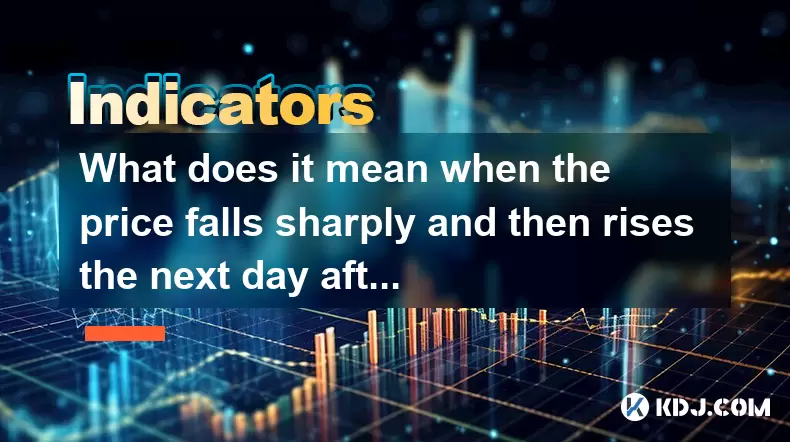
Understanding Sharp Price Drops in Cryptocurrency
When a cryptocurrency experiences a sharp price drop, it typically indicates a sudden and significant decline in its market value. This phenomenon can be attributed to various factors, including negative news, regulatory changes, or large sell-offs by institutional investors. In the context of a limit down event, where trading is halted due to excessive volatility, a sharp fall may occur as traders panic and rush to sell their holdings.
Limit down scenarios are particularly relevant in traditional markets but less common in cryptocurrency exchanges. However, some platforms may implement similar mechanisms during extreme market conditions. The immediate aftermath of such an event often sees heightened uncertainty among traders, which can lead to further downward pressure on prices before any recovery begins.
The Role of Market Sentiment in Post-Drop Recovery
Following a sharp decline, especially after a limit down situation, market sentiment plays a critical role in determining whether the price will recover quickly or continue falling. If the initial drop was caused by temporary factors—such as a short-term rumor or technical glitch—traders might see the lower price as an opportunity to buy at a discount. This influx of buyers can cause the price to rebound significantly the next day.
Conversely, if the drop stems from long-term concerns like regulatory crackdowns or technological vulnerabilities, the recovery might take longer. Positive developments that counteract the original cause of the drop can trigger a rebound, such as official statements from project teams, favorable legal rulings, or broader market stabilization.
Technical Analysis of Sudden Downturns and Reversals
From a technical perspective, a sharp drop followed by a strong recovery often creates what traders call a "reversal candlestick pattern." These patterns suggest that selling pressure has exhausted itself and buying momentum is returning. Traders who monitor such signals closely may enter long positions once they observe signs of stabilization, contributing to the subsequent price increase.
Additionally, volume spikes during both the drop and the recovery can provide insight into the strength of the move. High volume during the fall indicates aggressive selling, while high volume during the rebound suggests strong buying interest. Analyzing these patterns helps traders assess whether the recovery is sustainable or just a temporary bounce.
Psychological Factors Influencing Trader Behavior
The emotional response of traders significantly impacts post-limit down dynamics. After witnessing a steep decline, many investors experience fear and uncertainty, prompting them to liquidate their positions prematurely. This behavioral bias known as "panic selling" exacerbates the initial drop.
However, once the market stabilizes, some traders realize that the worst-case scenario did not materialize, leading them to re-enter the market. This shift in psychology from fear to optimism can drive rapid price increases, especially when the underlying fundamentals of the asset remain intact or show signs of improvement.
Historical Examples of Sharp Drops Followed by Rebounds
Several notable instances in the crypto space demonstrate how assets have reacted after experiencing severe drops followed by rebounds. For example, Bitcoin faced a dramatic crash in March 2020 due to global economic turmoil triggered by the pandemic. Despite this, it recovered within weeks and eventually reached new all-time highs later that year.
Similarly, Ethereum saw sharp declines during flash crashes or exchange-related incidents, only to rebound strongly afterward. These examples illustrate that while sudden drops can be alarming, they do not always signal permanent losses. Instead, they often present opportunities for informed traders who understand market cycles and risk management strategies.
Frequently Asked Questions
Q: What should I do if my cryptocurrency experiences a sharp drop and then recovers?
A: Assess the reason behind the drop first. If it was due to temporary issues and the fundamentals remain strong, holding or even adding to your position could be viable. Always consider your risk tolerance and investment strategy before making decisions.
Q: Can limit down rules apply to cryptocurrencies?
A: While most crypto exchanges do not enforce formal limit down rules like traditional stock markets, some may temporarily halt trading during extreme volatility. These halts aim to prevent panic selling and give traders time to reassess.
Q: How can I identify a potential rebound after a sharp drop?
A: Look for increased buying volume, positive news related to the project, and technical indicators like bullish candlestick patterns. Monitoring social media sentiment and expert analysis can also help gauge market mood.
Q: Is it safe to buy after a major price drop?
A: It depends on the cause of the drop and your understanding of the asset. Buying the dip can be profitable if done with proper research and risk management. Never invest based solely on emotion or FOMO (fear of missing out).
Disclaimer:info@kdj.com
The information provided is not trading advice. kdj.com does not assume any responsibility for any investments made based on the information provided in this article. Cryptocurrencies are highly volatile and it is highly recommended that you invest with caution after thorough research!
If you believe that the content used on this website infringes your copyright, please contact us immediately (info@kdj.com) and we will delete it promptly.
- Celestia Under Fire: Navigating the $100M FUD Storm
- 2025-06-24 16:45:12
- XLM Price, Bitcoin Solaris, and Returns Prediction: Navigating the Crypto Landscape
- 2025-06-24 16:25:13
- Dogecoin Price Prediction: Will DOGE Bounce Back by June 25?
- 2025-06-24 16:45:12
- Adam Schiff's COIN Act: Curbing Crypto Endorsements and Conflicts of Interest
- 2025-06-24 16:25:13
- Bitcoin, Ethereum, Ceasefire: Crypto Markets React to Unexpected Geopolitical Developments
- 2025-06-24 17:05:12
- PIPE Transactions, On-Chain Protocols, and Market Analysis: A New Era for Crypto?
- 2025-06-24 17:24:16
Related knowledge
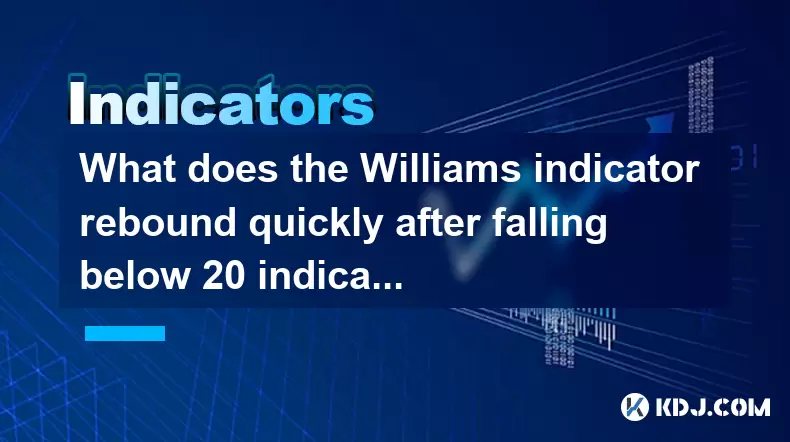
What does the Williams indicator rebound quickly after falling below 20 indicate?
Jun 24,2025 at 04:49pm
Understanding the Williams %R IndicatorThe Williams %R indicator, also known as Williams Percent Range, is a momentum oscillator used in technical analysis to identify overbought and oversold conditions in financial markets, including cryptocurrencies. It was developed by Larry Williams and typically operates on a scale from 0 to -100. In the context of...
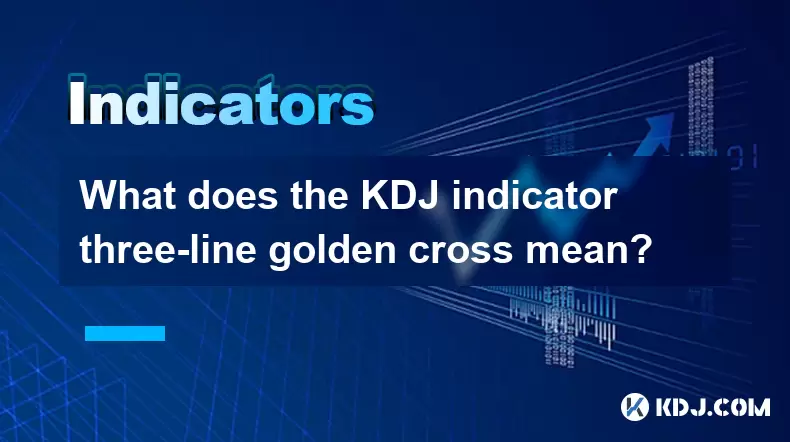
What does the KDJ indicator three-line golden cross mean?
Jun 24,2025 at 05:28pm
Understanding the KDJ Indicator in Cryptocurrency TradingThe KDJ indicator is a technical analysis tool widely used in cryptocurrency trading to identify potential buy and sell signals. It combines elements of two other indicators: the Stochastic Oscillator and the J line, which acts as a signal line. The KDJ consists of three lines — K, D, and J — each...
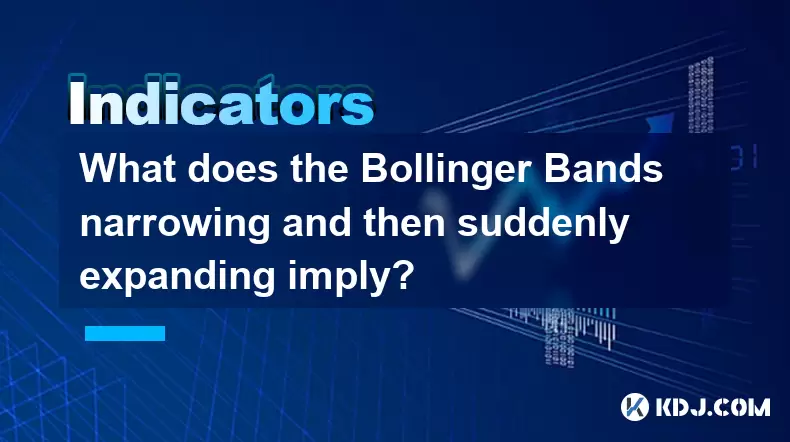
What does the Bollinger Bands narrowing and then suddenly expanding imply?
Jun 24,2025 at 05:56pm
Understanding Bollinger Bands in Cryptocurrency TradingBollinger Bands, a popular technical analysis tool, are widely used in cryptocurrency trading to assess price volatility and potential trend reversals. The indicator consists of three lines: a Simple Moving Average (SMA) in the middle, typically set at 20 periods, with two outer bands that represent...
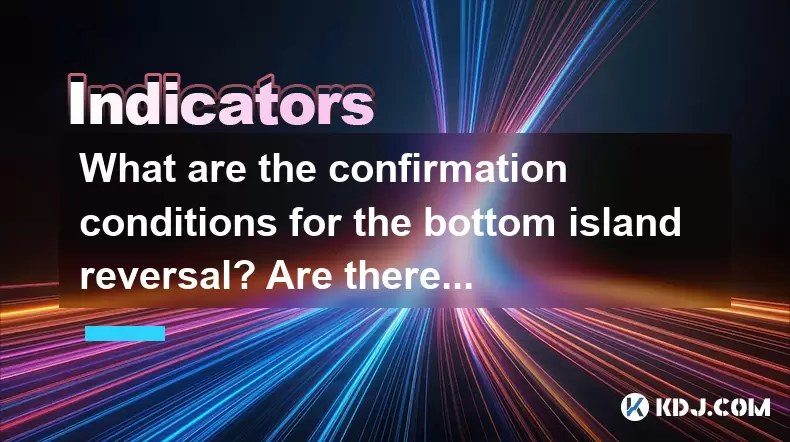
What are the confirmation conditions for the bottom island reversal? Are there many false signals?
Jun 24,2025 at 04:56pm
Understanding the Bottom Island Reversal PatternThe bottom island reversal is a rare but significant candlestick pattern that indicates a potential shift from a downtrend to an uptrend. It typically forms when there's a gap down followed by a gap up, leaving a 'blank' space on the chart — the island — which is isolated from the surrounding price action....
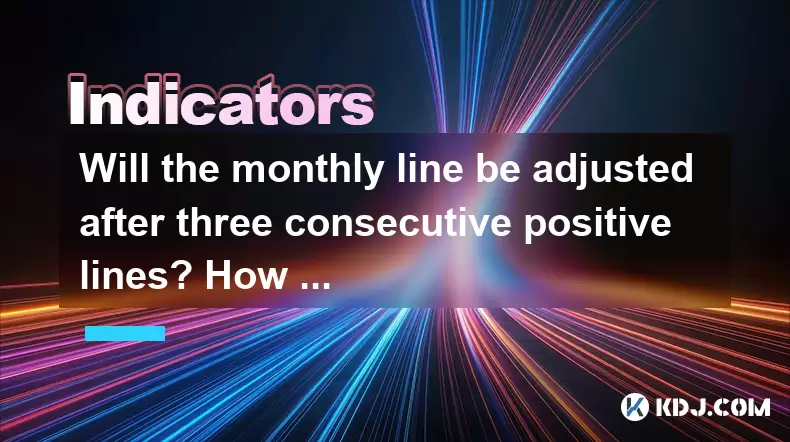
Will the monthly line be adjusted after three consecutive positive lines? How big is the callback range in general?
Jun 24,2025 at 05:21pm
Understanding Monthly Candlestick Patterns in CryptocurrencyIn the realm of cryptocurrency trading, monthly candlestick patterns play a crucial role in analyzing long-term price behavior. A monthly chart provides traders with a macro view of how an asset has performed over extended periods. When observing three consecutive positive (green) candles on th...
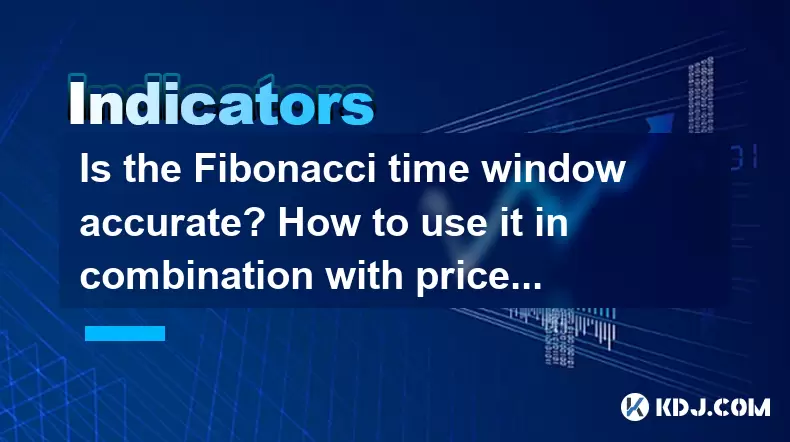
Is the Fibonacci time window accurate? How to use it in combination with price patterns?
Jun 24,2025 at 03:49pm
Understanding the Fibonacci Time Window ConceptThe Fibonacci time window is a technical analysis tool derived from the Fibonacci sequence, commonly used in financial markets, including cryptocurrency trading, to predict potential reversal or continuation points based on time rather than price. Unlike traditional Fibonacci retracement levels that focus o...

What does the Williams indicator rebound quickly after falling below 20 indicate?
Jun 24,2025 at 04:49pm
Understanding the Williams %R IndicatorThe Williams %R indicator, also known as Williams Percent Range, is a momentum oscillator used in technical analysis to identify overbought and oversold conditions in financial markets, including cryptocurrencies. It was developed by Larry Williams and typically operates on a scale from 0 to -100. In the context of...

What does the KDJ indicator three-line golden cross mean?
Jun 24,2025 at 05:28pm
Understanding the KDJ Indicator in Cryptocurrency TradingThe KDJ indicator is a technical analysis tool widely used in cryptocurrency trading to identify potential buy and sell signals. It combines elements of two other indicators: the Stochastic Oscillator and the J line, which acts as a signal line. The KDJ consists of three lines — K, D, and J — each...

What does the Bollinger Bands narrowing and then suddenly expanding imply?
Jun 24,2025 at 05:56pm
Understanding Bollinger Bands in Cryptocurrency TradingBollinger Bands, a popular technical analysis tool, are widely used in cryptocurrency trading to assess price volatility and potential trend reversals. The indicator consists of three lines: a Simple Moving Average (SMA) in the middle, typically set at 20 periods, with two outer bands that represent...

What are the confirmation conditions for the bottom island reversal? Are there many false signals?
Jun 24,2025 at 04:56pm
Understanding the Bottom Island Reversal PatternThe bottom island reversal is a rare but significant candlestick pattern that indicates a potential shift from a downtrend to an uptrend. It typically forms when there's a gap down followed by a gap up, leaving a 'blank' space on the chart — the island — which is isolated from the surrounding price action....

Will the monthly line be adjusted after three consecutive positive lines? How big is the callback range in general?
Jun 24,2025 at 05:21pm
Understanding Monthly Candlestick Patterns in CryptocurrencyIn the realm of cryptocurrency trading, monthly candlestick patterns play a crucial role in analyzing long-term price behavior. A monthly chart provides traders with a macro view of how an asset has performed over extended periods. When observing three consecutive positive (green) candles on th...

Is the Fibonacci time window accurate? How to use it in combination with price patterns?
Jun 24,2025 at 03:49pm
Understanding the Fibonacci Time Window ConceptThe Fibonacci time window is a technical analysis tool derived from the Fibonacci sequence, commonly used in financial markets, including cryptocurrency trading, to predict potential reversal or continuation points based on time rather than price. Unlike traditional Fibonacci retracement levels that focus o...
See all articles
























































































